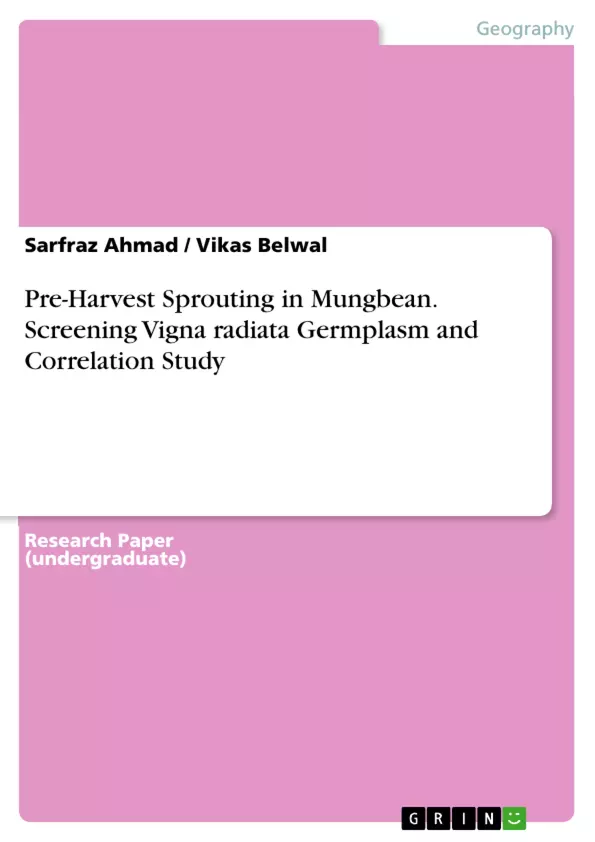This book covers the various aspects such as morphological characterization and evaluation of mungbean germplasm, laboratory evaluation of PHS resistance using various pod and seed parameters, Identification of PHS resistance/tolerant germplasm, study of association and direct and indirect effect of various characters on pre-harvest sprouting.
Mungbean [Vigna radiata (L.) Wilczek] is one of the important grain legumes of global economic importance. It requires hot and dry climate. Among the three seasons, kharif is most important and in this season pre-harvest sprouting (PHS) is a big problem causing huge losses in production. Nearly 60-70% of yield losses have been reported in green gram and black gram due to PHS. In view of the substantial losses caused by PHS, it is imperative to develop PHS tolerant varieties for yield improvement in mungbean. However, the information on these aspects is lacking because little work has been done on this crop.
Inhaltsverzeichnis (Table of Contents)
- CHAPTERS
- INTRODUCTION
- REVIEW OF LITERATURE
- MATERIALS AND METHODS
- EXPERIMENTAL RESULTS
- DISCUSSION
- SUMMARY AND CONCLUSION
- LITERATURE CITED
Zielsetzung und Themenschwerpunkte (Objectives and Key Themes)
This book investigates pre-harvest sprouting (PHS) in mungbean, a significant grain legume. The research focuses on identifying PHS tolerant varieties to mitigate yield losses and enhance mungbean production. The study aims to improve understanding of PHS resistance and its influence on mungbean yield.
- Morphological characterization and evaluation of mungbean germplasm
- Laboratory evaluation of PHS resistance using pod and seed parameters
- Identification of PHS resistant and tolerant germplasm
- Association analysis of characters influencing pre-harvest sprouting
- Direct and indirect effects of various characters on pre-harvest sprouting
Zusammenfassung der Kapitel (Chapter Summaries)
- INTRODUCTION: This chapter provides a comprehensive overview of mungbean, its importance in global agriculture, and the significance of PHS as a yield-limiting factor. It also outlines the objectives and methodology of the study.
- REVIEW OF LITERATURE: This chapter summarizes existing research on mungbean, focusing on PHS, its causes, and various strategies for mitigating its effects. It also reviews previous studies on genetic resistance to PHS in mungbean.
- MATERIALS AND METHODS: This chapter describes the experimental design, materials used, and the procedures employed in the study. It outlines the specific genotypes of mungbean used, the experimental conditions, and the methods used for assessing PHS resistance.
- EXPERIMENTAL RESULTS: This chapter presents the data obtained from the experiments, analyzing the performance of different genotypes in terms of PHS resistance, morphological traits, and other relevant parameters.
- DISCUSSION: This chapter interprets the findings, discussing the implications of the results for understanding PHS resistance in mungbean. It explores the relationships between different traits and their contribution to PHS resistance.
Schlüsselwörter (Keywords)
The research focuses on pre-harvest sprouting, mungbean, germplasm, pod and seed parameters, PHS resistance, yield improvement, genetic diversity, correlation analysis, and path coefficient analysis.
- Quote paper
- Sarfraz Ahmad (Author), Vikas Belwal (Author), 2011, Pre-Harvest Sprouting in Mungbean. Screening Vigna radiata Germplasm and Correlation Study, Munich, GRIN Verlag, https://www.hausarbeiten.de/document/1245070


